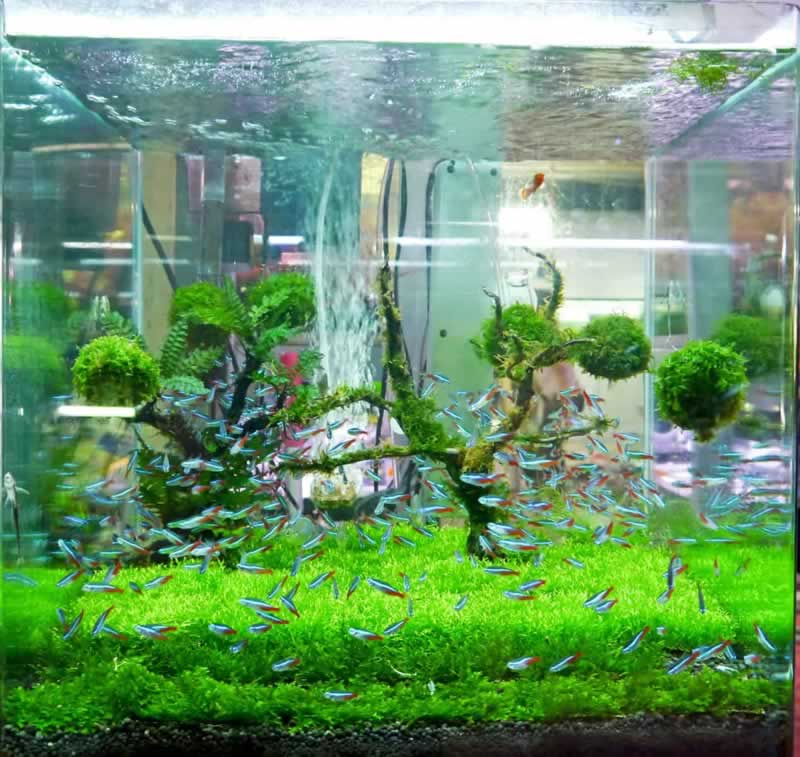If cleaning your aquarium is a hectic task, you can follow the tips below for building a self-sufficient aquarium. An aquarium that cleans itself sounds too good to be true. However, this is a reality that people who do not need to spend a lot of time on aquarium maintenance can enjoy.
Today we're going to take you step-by-step through creating a self-sustaining aquarium that gives proper importance to live plants and fish that coexist in harmony with minimal human intervention.
Get the right aquarium
First and foremost, you need to purchase a good quality aquarium from a pet store. When you get yourself a good aquarium, you can count on its durability and silicone discharge, which can otherwise prove detrimental to aquatic life. It is essential to ensure that silicone is used to fasten the glass corners of aquariums. The size of the tank is also an important consideration as it will give better results when compared to the small ones. It is recommended that you use tanks between 30 and 200 gallons as they have the best water to fish to plant ratio.
Provide a water filter
A basic water filter with ceramic rings and bio-balls can stimulate the growth of nitrate-eliminating microorganisms that reside in the filters. The size of your filter must match the water in the aquarium. Small filters tend to burn out quickly. The filters can either be part of the air pump system or a separate element that keeps the water clean and adequately ventilated.
Add live plants
Live plants like guppy grass can make your fish at home as they add oxygen to the water while lowering nitrate counts at the same time. This guide to caring for guppy grass will teach you how important it is to your aquarium. They can also provide food and shelter for smaller fish, unless you naturally clean your aquarium.

Plants like Java Fern and Java Moss are low-maintenance options that can also serve as a food source for baby fish. You also don't have to worry too much about overfilling your tank as these plants won't grow too vigorously. Dense plantations also provide the perfect hiding place for the more fearful animals. Plants like pothos grow above the water level while their roots remain submerged in water to remove any toxins.
Add fish
Aquarium cleaning fish like Siamese algae eaters, Corydoras, and Plecostomus can do the job for you. While Corydora consumes the excess food particles from the soil, the Siamese algae eater devours the algae and Plecostomus wipes algae from plants, glass and stones. While these fish are not as visually appealing as their exotic counterparts, they can be of great help in keeping the aquarium clean.
Hoplo catfish is another example of a fish food that usually enjoys hiding places like dense moss and can survive in a variety of water temperatures. Shrimps and snails do not fall under the category of fish, but they can also help with cleaning the aquarium. Tiny ghost prawns, mysterious snails, bamboo prawns, and cherry prawns feed on waste to create a cleaner aquatic environment. However, before adding the fish to your aquarium, you need to carefully study their size, type, and environmental requirements. Certain species have a specific temperature requirement and in such cases you will need to place compatible species.
Conclusion
Contrary to popular belief, creating a self-sustaining aquarium isn't difficult provided you have the right type of plants, fish species, and associated equipment. No matter the size of your aquarium, keeping it clean is both time and labor intensive. You have to change water filters, clean air pumps, vacuum the surface and even change the water from time to time. Building a self-cleaning aquarium can save you time that can next be diverted to more productive avenues.




